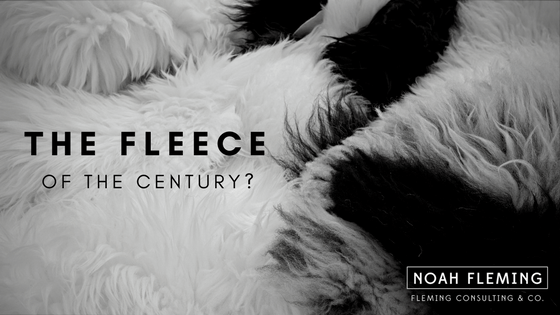Listen to this week’s audio version of the tidbit.
The NYT called Saturday night’s boxing match The Fleece of the Century, and it’s hard to argue against that. A lackluster boxing match with two entertainers showing us that it was all just a big ruse as they buddied up during the post-fight press conference.
McGregor couldn’t keep the grin off his face as he said, “the cheques are a lot better in boxing,” all the while promoting his upcoming whiskey brand. The two hugged and smiled as they showed their cards–millions had bought it hook, line, and sinker.
Reportedly, the boxers walked away with a combined $300M bucks. Mayweather got $200M and McGregor left with $100M.
The view of the NYT article seemed to be the rule, not the exception. Everywhere I looked on Sunday morning the stories were the same. We were all fleeced, they said. Mayweather & McGregor pulled off the ultimate 9-figure con.
This kind of criticism reminds me a lot of pundits saying that Facebook was an overvalued flash in the pan in 2007 (Zuckerberg should have sold to MySpace for $50M, he lost out on the deal of a lifetime). It is not only short sighted, but it also seems to miss the point so spectacularly that it makes you wonder whether they live in the same world as the rest of us.
Here’s the flip-side of the NYT opinion:
Mayweather and McGregor earned every penny of their split $300M before they ever stepped into the ring. They created a spectacle, they spent months doing the “world tour,” and they created an experience unlike any other.
To think that McGregor and Mayweather were selling a boxing match is ridiculous.
To think that the vast majority of the people watching cared about which boxer was better is ridiculous.
They were selling entertainment, and millions of people bought it.
It’s a lesson that both McGregor and Mayweather have learned in their respective sports–nobody cares how good they are at what they do, but everybody cares how entertained they are by the combatants.
The business lesson here should be obvious. It was a core component of my book The Customer Loyalty Loop, and something that I’ve talked about in these Tidbits before, but I really cannot stress this enough.
Simply put: You are not selling what most people think you are selling, and you won’t be effective until you truly understand what your customers really want to buy.
For some of us, that improvement is measured in extra profit for our clients at the end of their year.
For others, it’s measured in stress reduction, or increased confidence, or increased productivity.
The key question for all of us is this:
“What are our clients really buying from us?”
Once you know that, you can figure out how to package that regarding the product/service that they’re paying for. You can build the experience to support the product/service that delivers the desired results. Nobody needs to get fleeced–you just give your customers what they really want.
Here’s your challenge for this week:
In three sentences or less, describe what your customers are buying from you WITHOUT mentioning your products or services.
Feel free to send me your response.
